Properties
| Storage Buffer | PBS pH7.4, 50% glycerol, 0.09% sodium azide *Storage buffer may change when conjugated |
| Storage Temperature | -20ºC, Conjugated antibodies should be stored according to the product label |
| Shipping Temperature | Blue Ice or 4ºC |
| Purification | Protein G Purified |
| Clonality | Monoclonal |
| Clone Number | N81/2 (Formerly sold as S81-2) |
| Isotype | IgG1 |
| Specificity | Detects ~105kDa. No cross-reactivity against GABA(B)R1. |
| Cite This Product | StressMarq Biosciences Cat# SMC-402, RRID: AB_11232611 |
| Certificate of Analysis | 1 µg/ml of SMC-402 was sufficient for detection of GABA(B)R2 in 20 µg of rat brain membrane lysate and assayed by colorimetric immunoblot analysis using goat anti-mouse IgG:HRP as the secondary antibody. |
Biological Description
| Alternative Names | BcDNA:GH07312 Antibody, CG6706 Antibody, CT20836 Antibody, D GABA[[B]]R2 Antibody, D Gaba2 Antibody, FLJ36928 Antibody, G protein coupled receptor 51 Antibody, G-protein coupled receptor 51 Antibody, GAB B R2 Antibody, GABA B R2 Antibody, GABA B receptor 2 Antibody, GABA B RECEPTOR Antibody, GABA-B receptor 2 Antibody, GABA-B-R2 Antibody, GABA-BR2 Antibody, GABA[[B]]R2 Antibody, GABAB R2 Antibody, GABABR 2 Antibody, GABABR2 Antibody, GABB R2 Antibody, GABBR 2 Antibody, GABBR2 Antibody, GABR2_HUMAN Antibody, Gamma aminobutyric acid (GABA) B receptor 2 Antibody, Gamma aminobutyric acid B receptor 2 Antibody, Gamma aminobutyric acid GABA B receptor 2 Antibody, Gamma aminobutyric acid type B receptor subunit 2 Antibody, Gamma-aminobutyric acid type B receptor subunit 2 Antibody, Gb 2 Antibody, Gb2 Antibody, GH07312 Antibody, GPR 51 Antibody, GPR51 Antibody, GPRC 3B Antibody, GPRC3B Antibody, HG 20 Antibody, HG20 Antibody, HRIHFB2099 Antibody, Metabotropic GABA B receptor subtype 2 Antibody, OTTHUMP00000021776 Antibody, OTTHUMP00000063797 Antibody, R2 SUBUNIT Antibody |
| Research Areas | GABA Receptors, GABAB Receptors, Neuroscience, Neurotransmitter Receptors |
| Cellular Localization | Cell Junction, Cell membrane, Postsynaptic cell membrane, Synapse |
| Accession Number | NP_113990.1 |
| Gene ID | 83633 |
| Swiss Prot | O88871 |
| Scientific Background | GABA (γ-aminobutyric acid) is the primary inhibitory neurotransmitter in the central nervous system and interacts with three different receptors: GABA(A), GABA(B) and GABA(C) receptor. The ionotropic GABA(A) and GABA(C) receptors are ligand-gated ion channels that produce fast inhibitory synaptic transmission. In contrast, the metabotropic GABA(B) receptor is coupled to G proteins that modulate slow inhibitory synaptic transmission (1). Functional GABA(B) receptors form heterodimers of GABA(B)R1 and GABA(B)R2 where GABA(B)R1 binds the ligand and GABA(B)R2 is the primary G protein contact site (2). Two isoforms of GABA(B)R1 have been cloned: GABA(B)R1a is a 130 kD protein and GABA(B)R1b is a 95 kD protein (3). G proteins subsequently inhibit adenyl cylase activity and modulate inositol phospholipid hydrolysis. GABA(B) receptors have both pre- and postsynaptic inhibitions: presynaptic GABA(B) receptors inhibit neurotransmitter release through suppression of high threshold calcium channels, while postsynaptic GABA(B) receptors inhibit through coupled activation of inwardly rectifying potassium channels. In addition to synaptic inhibition, GABA(B) receptors may also be involved in hippocampal long-term potentiation, slow wave sleep and muscle relaxation (1). |
| References |
1. Jones K.A,. et al. (2000) Neuropsychopharmacology 23: S41-9. 2. Duthey B., et al. (2002) J Biol Chem. 277: 3236-41. 3. Kaupmann K., et al. (1997) Nature 386: 239-46. |
Product Images
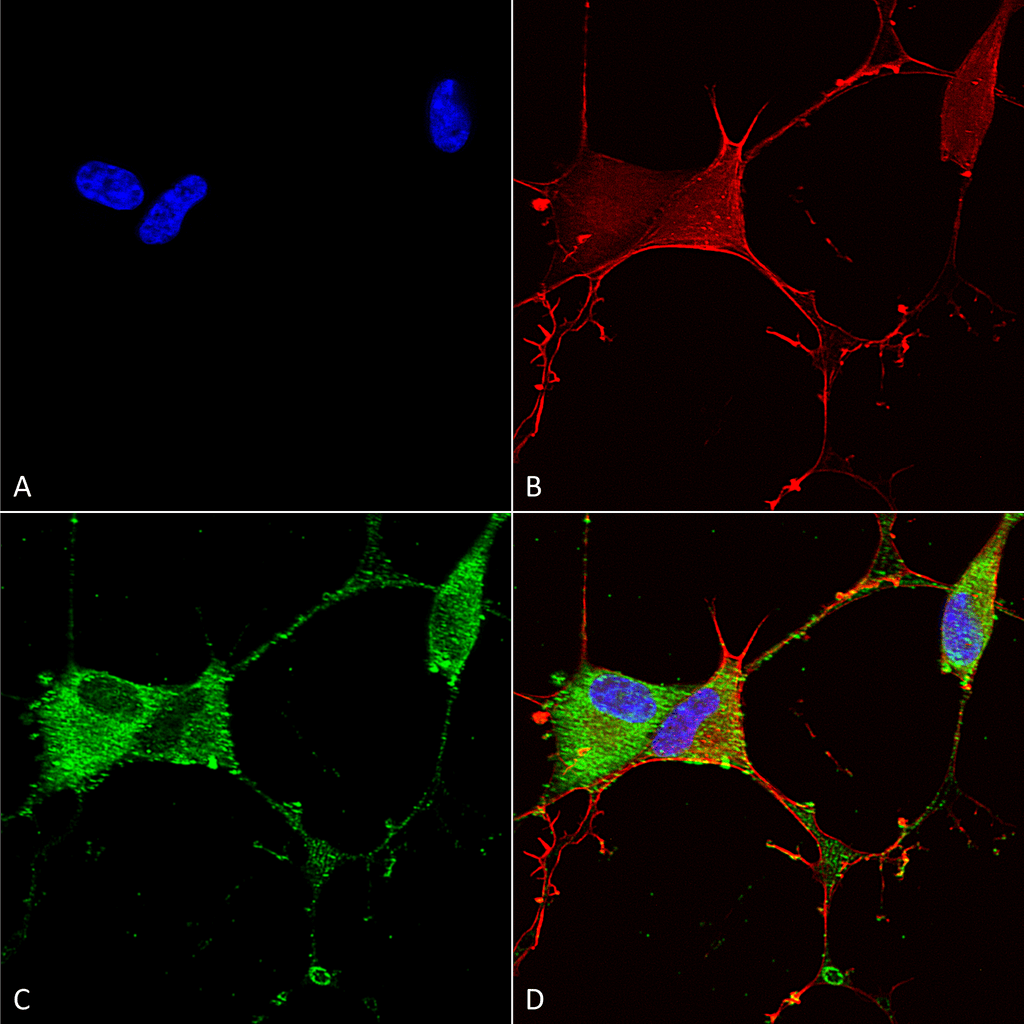
Immunocytochemistry/Immunofluorescence analysis using Mouse Anti-GABA-B Receptor 2 Monoclonal Antibody, Clone N81/2 (SMC-402). Tissue: Neuroblastoma cells (SH-SY5Y). Species: Human. Fixation: 4% PFA for 15 min. Primary Antibody: Mouse Anti-GABA-B Receptor 2 Monoclonal Antibody (SMC-402) at 1:100 for overnight at 4°C with slow rocking. Secondary Antibody: AlexaFluor 488 at 1:1000 for 1 hour at RT. Counterstain: Phalloidin-iFluor 647 (red) F-Actin stain; Hoechst (blue) nuclear stain at 1:800, 1.6mM for 20 min at RT. (A) Hoechst (blue) nuclear stain. (B) Phalloidin-iFluor 647 (red) F-Actin stain. (C) GABA-B Receptor 2 Antibody (D) Composite.
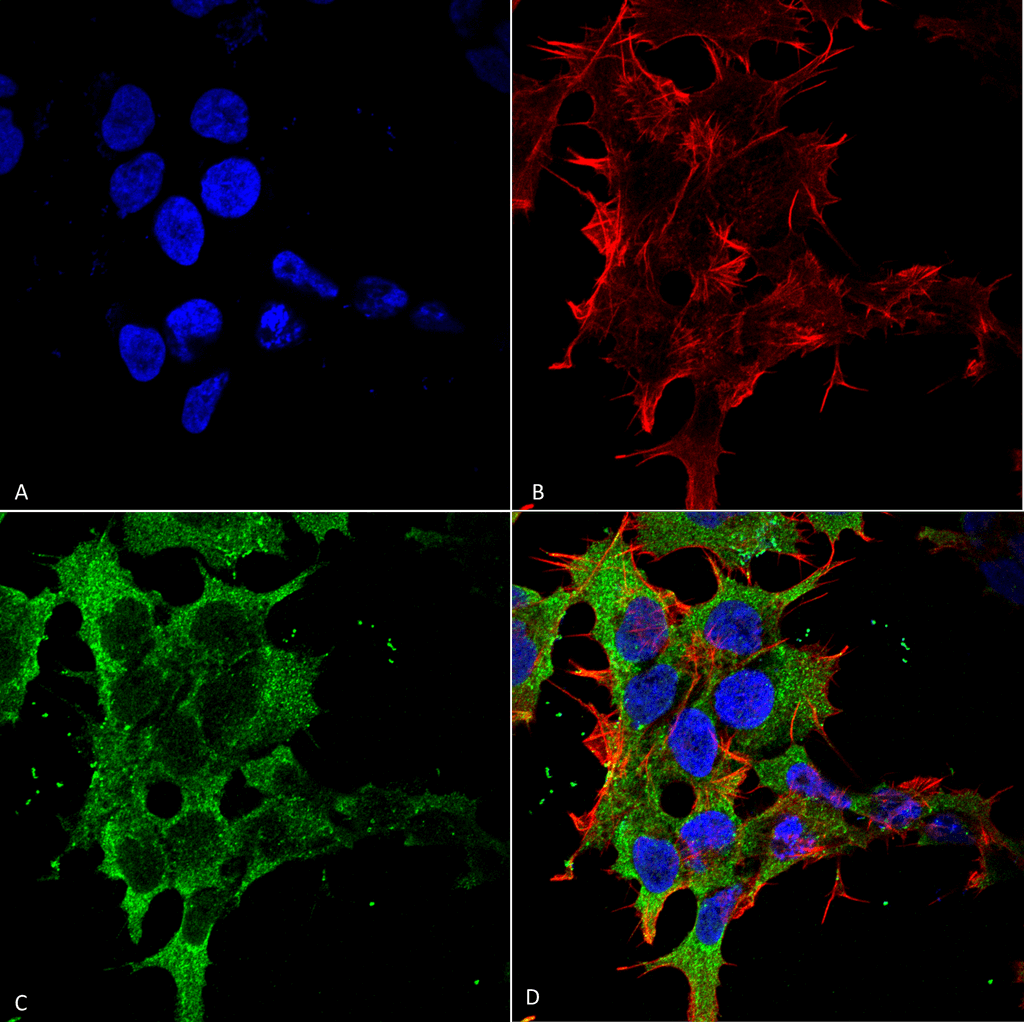
Immunocytochemistry/Immunofluorescence analysis using Mouse Anti-GABA-B Receptor 2 Monoclonal Antibody, Clone N81/2 (SMC-402). Tissue: Neuroblastoma cell line (SK-N-BE). Species: Human. Fixation: 4% Formaldehyde for 15 min at RT. Primary Antibody: Mouse Anti-GABA-B Receptor 2 Monoclonal Antibody (SMC-402) at 1:100 for 60 min at RT. Secondary Antibody: Goat Anti-Mouse ATTO 488 at 1:100 for 60 min at RT. Counterstain: Phalloidin Texas Red F-Actin stain; DAPI (blue) nuclear stain at 1:1000, 1:5000 for 60min RT, 5min RT. Localization: Cell Membrane. Magnification: 60X. (A) DAPI (blue) nuclear stain. (B) Phalloidin Texas Red F-Actin stain. (C) GABA-B Receptor 2 Antibody. (D) Composite.
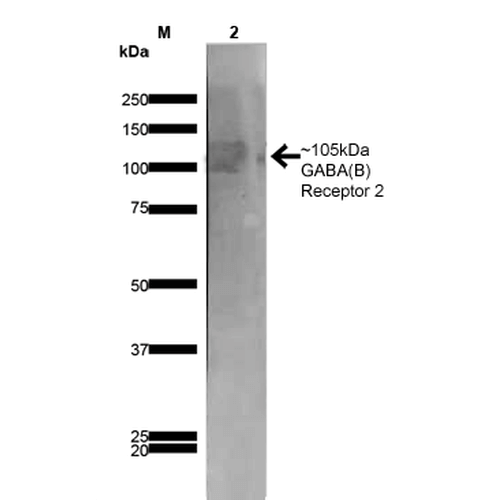
Western Blot analysis of Rat Brain Membrane showing detection of ~105 kDa GABA B Receptor 2 protein using Mouse Anti-GABA B Receptor 2 Monoclonal Antibody, Clone N81/2 (SMC-402). Lane 1: MW Ladder. Lane 2: Rat Brain Membrane (10 µg). . Load: 10 µg. Block: 5% milk. Primary Antibody: Mouse Anti-GABA B Receptor 2 Monoclonal Antibody (SMC-402) at 1:1000 for 1 hour at RT. Secondary Antibody: Goat Anti-Mouse IgG: HRP at 1:200 for 1 hour at RT. Color Development: TMB solution for 10 min at RT. Predicted/Observed Size: ~105 kDa.

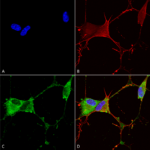
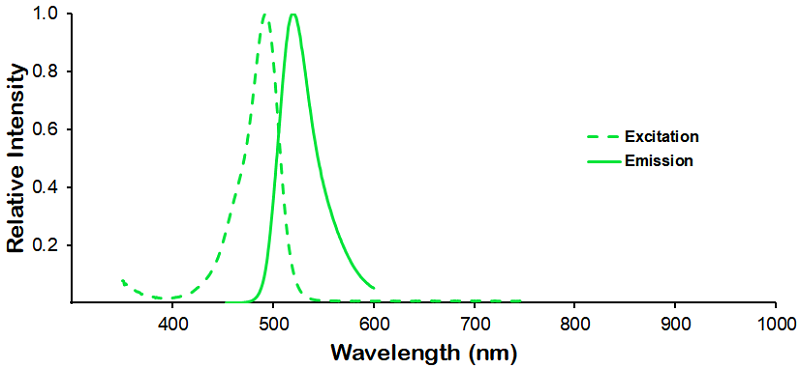
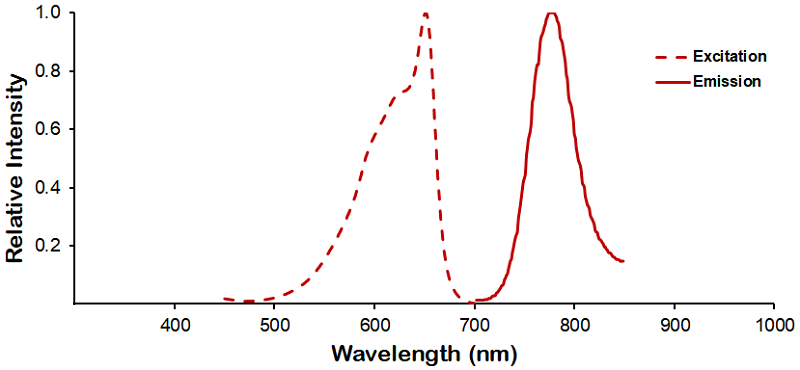
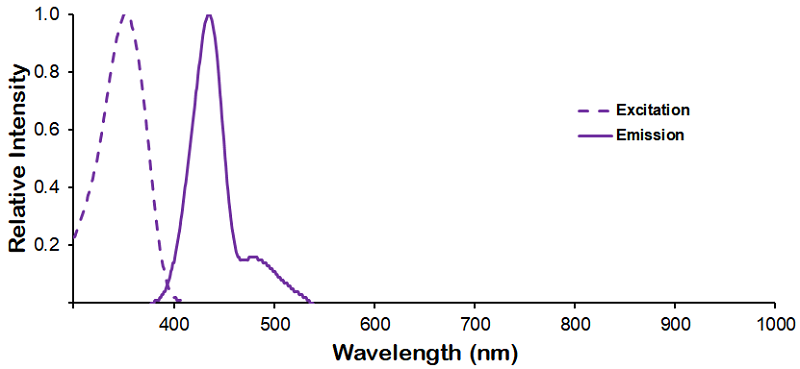
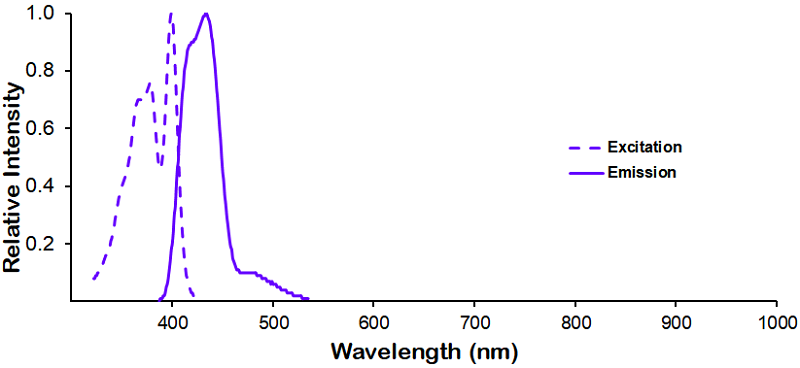
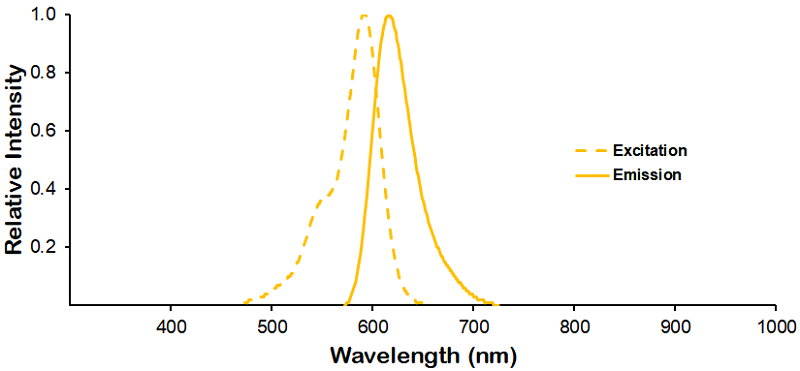
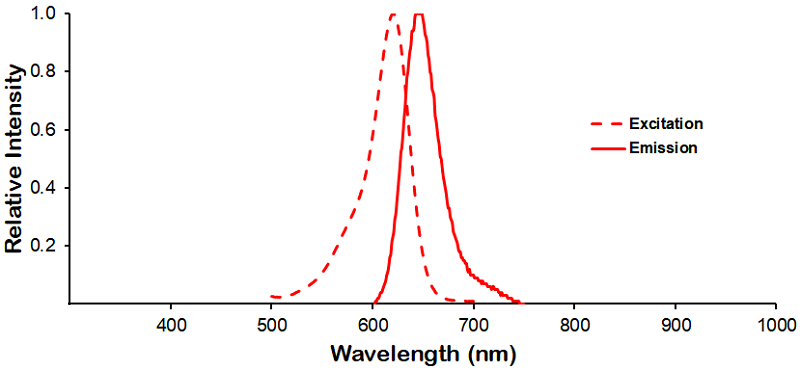
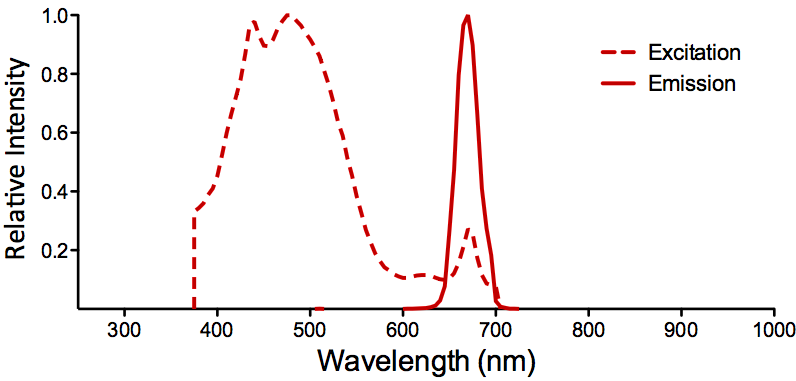
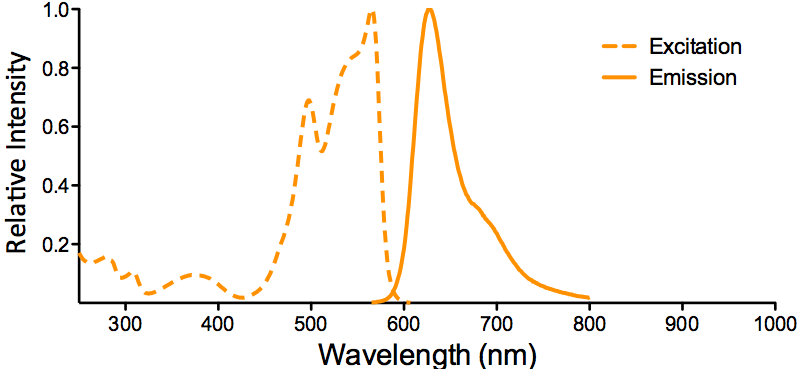
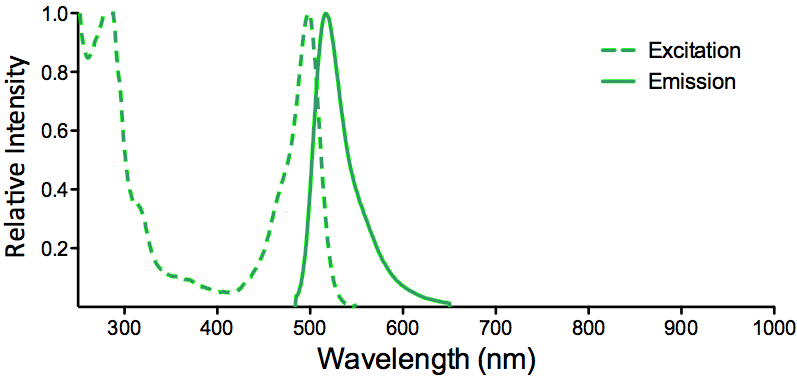
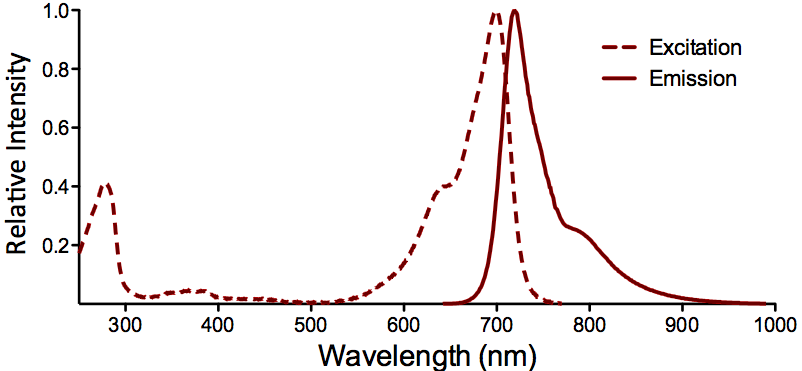
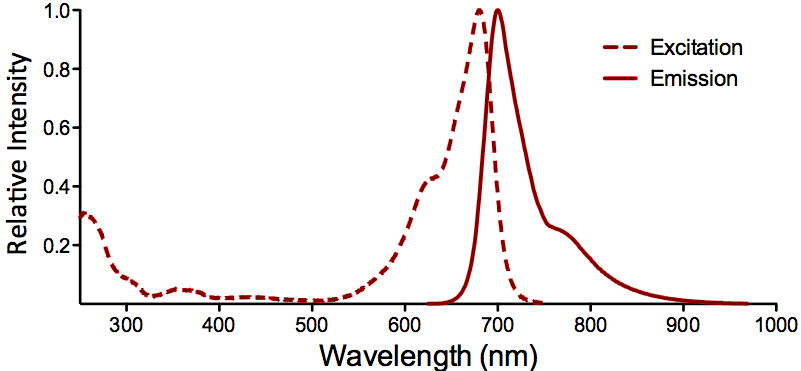
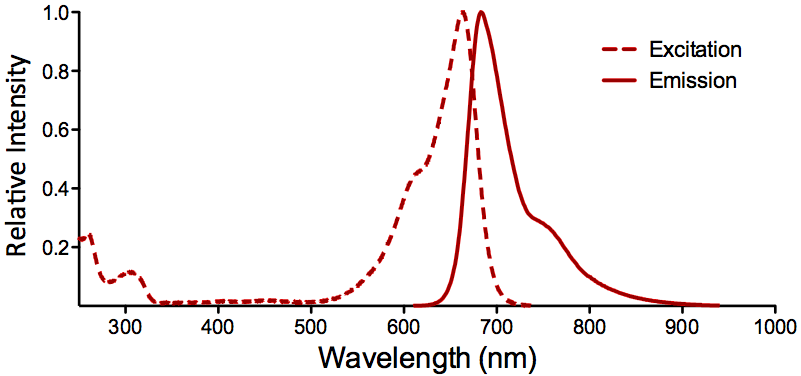
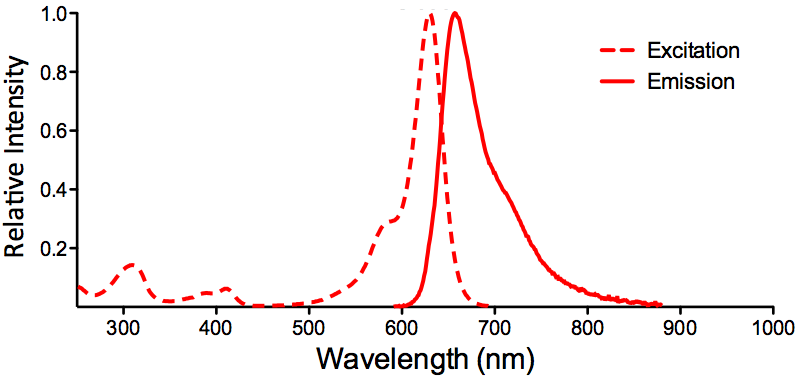
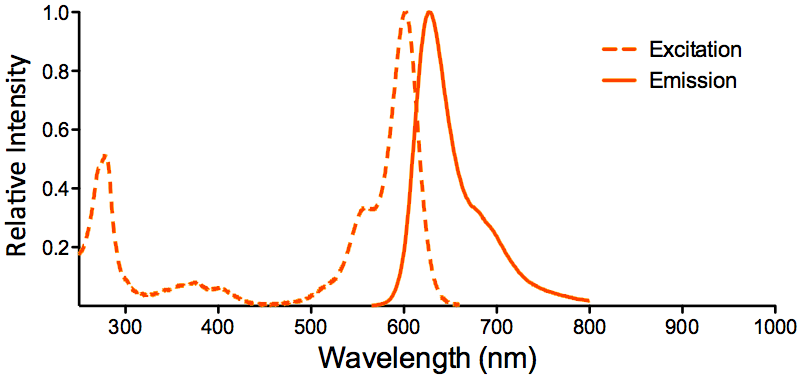
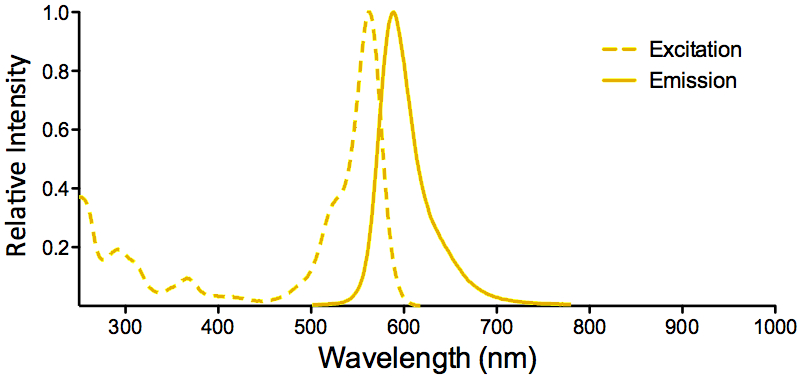
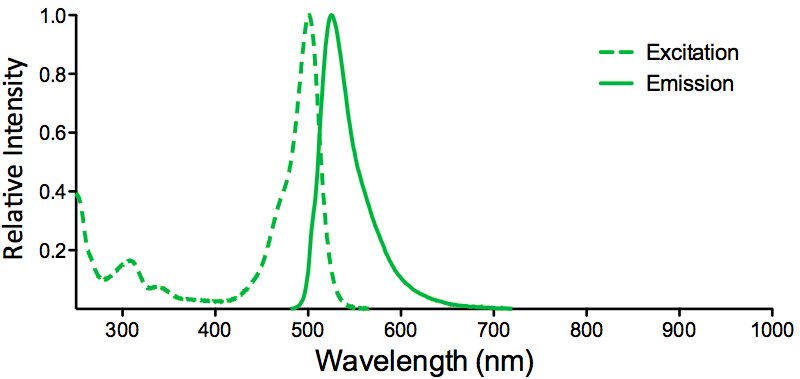
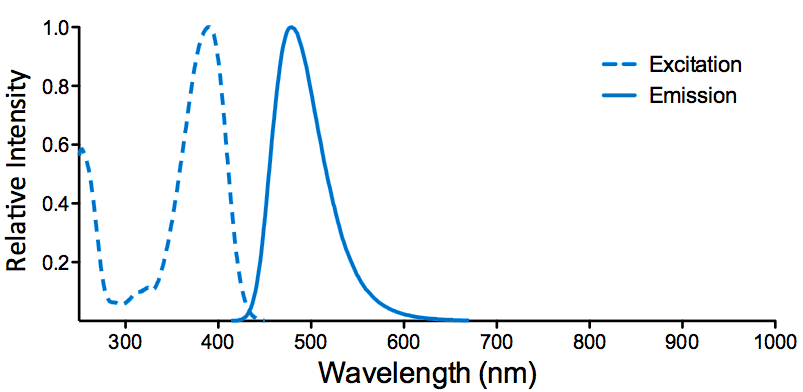
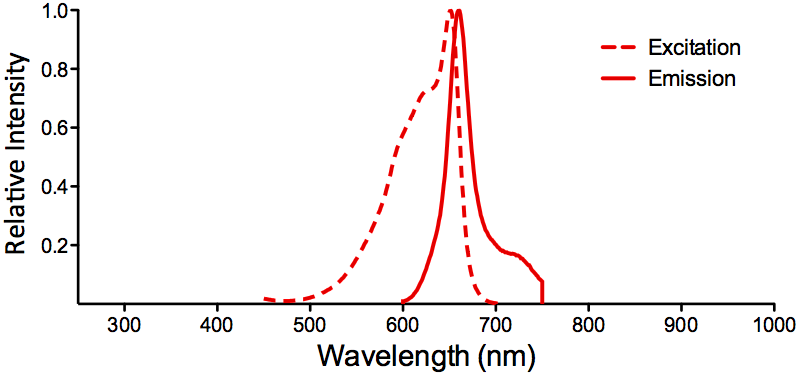
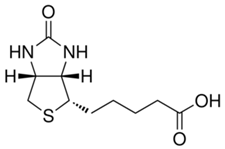
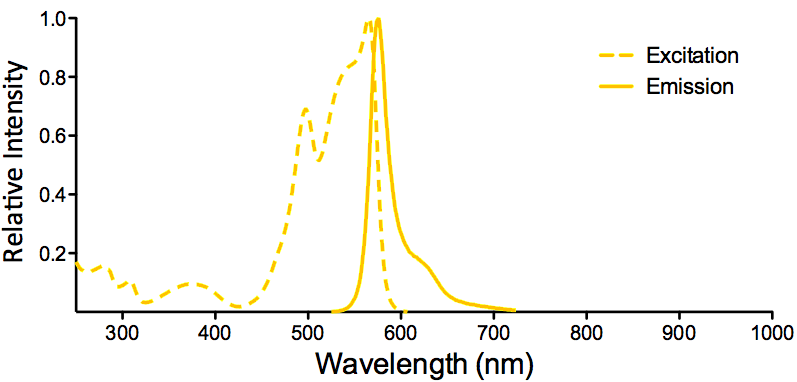
Reviews
There are no reviews yet.